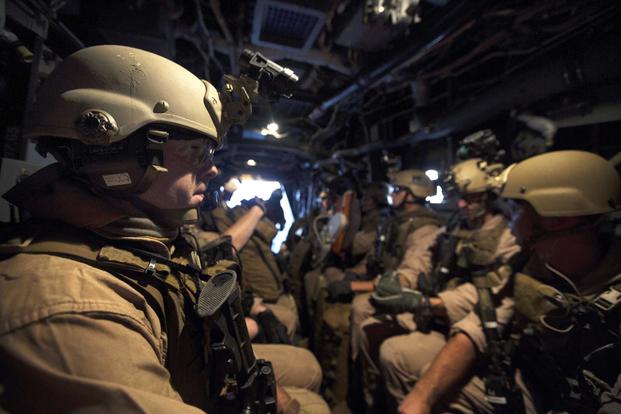Marine infantrymen may soon be able to see through the floor of an MV-22 Osprey and track terrain features as they approach their attack objective.
It sounds like science fiction, but Marine Lt. Col. Rory Quinn of the Pentagon's Close Combat Lethality Task Force says it could become reality if the Marine Corps decides to field the Integrated Visual Augmentation System (IVAS), a sophisticated Microsoft technology that the Army is developing to give soldiers a new level of situational awareness in combat.
In October, the Army will hold its second round of soldier evaluations, known as Soldier Touch Points, on what will eventually consist of a special set of tactical glasses that will display a soldier's weapon sight reticle and other key tactical information they will take into battle.
Army officials say IVAS will be ready for initial fielding in the fourth quarter of fiscal 2021.
Related content:
-
The Army Is Building Avatars that Can Fight Infantry Soldiers
-
New Set of Gear Could Allow Soldiers to Ditch AA Batteries for Good
Quinn said he sees IVAS as key to transforming Marine and Army infantry into a fifth-generation fighting force similar to the way fighter aircraft such as the F-35 Lighting II have evolved into fifth-gen technology.
"Effectively, we have a third-generation infantry," Quinn told an audience Tuesday at the iFest 2019 symposium, put on by the National Defense Industrial Association.
The lethality task force was stood up in 2018 by then-Defense Secretary Jim Mattis with the goal of resourcing the U.S. military's close-combat forces to become far more deadly than they are today.
"In the MV-22, the windows are [not that big] so if I am lucky, I am next to one and ... I can see ... the river path and I can see that we went on this side of the river, so that confirmed that we went in the right direction," Quinn said. "But the F-35 pilot has cameras on the outside of the airplane and looks through the floor of the airplane. ... He can look through the wing and see someone who is down low at six o'clock on his right flank.
"IVAS is coming, and it's going to create an F-35 [technology] for grunts, so I will simply look through the skin of the aircraft and see that I have turned 180 degrees out. I otherwise wouldn't be able to see that, and it creates chaos," he added.
The Marine Corps has not committed to IVAS, but officials at Marine Corps Combat Development Command, Combat Development and Integration, "are watching the [Soldier Touch Points] and watching to see how the results occur versus what the metrics had to be" on the system, Quinn said.
Roughly 50 Marines participated in the first Soldier Touch Point and the same number of Marines will likely be involved with the second evaluation in October, he said.
"The Marines often follow and trace the Army -- let the Army do the research and development," Quinn said.
The Army awarded a $480 million contract to Microsoft in late 2018 to develop its HoloLens technology into IVAS. The system is also being designed to provide soldiers with a synthetic training environment that will feature enemy avatars capable of learning soldier tactics so training scenarios are never the same, Army officials say.
-- Matthew Cox can be reached at matthew.cox@military.com.













